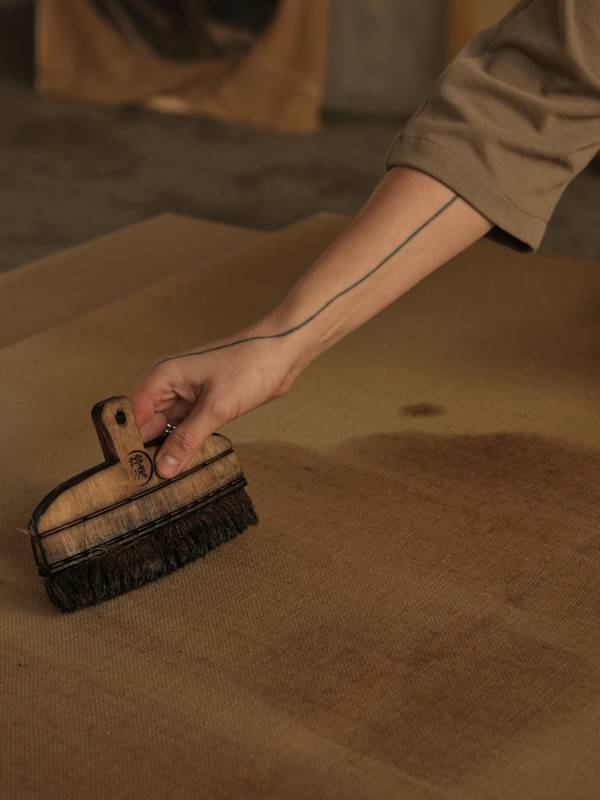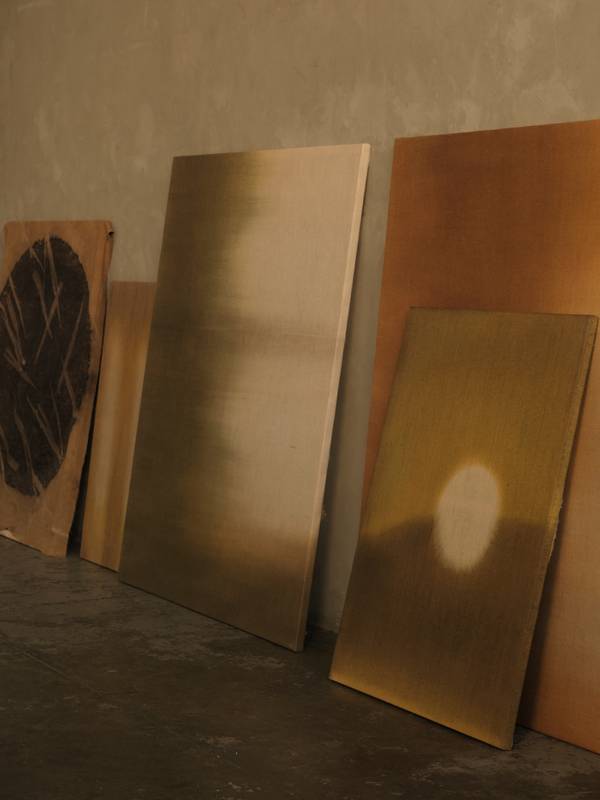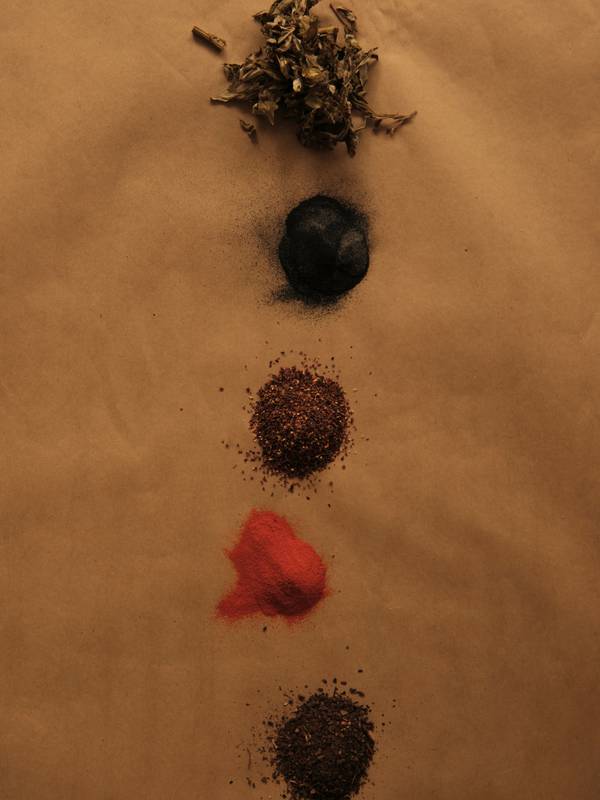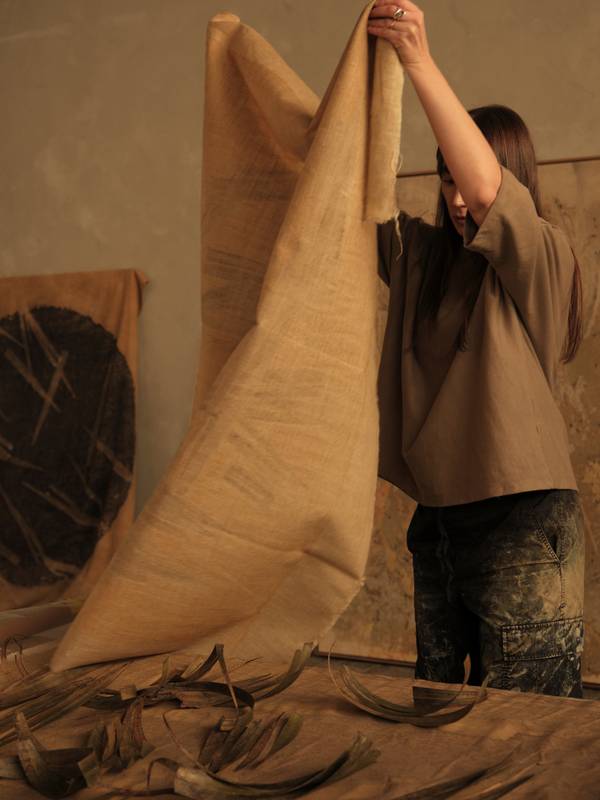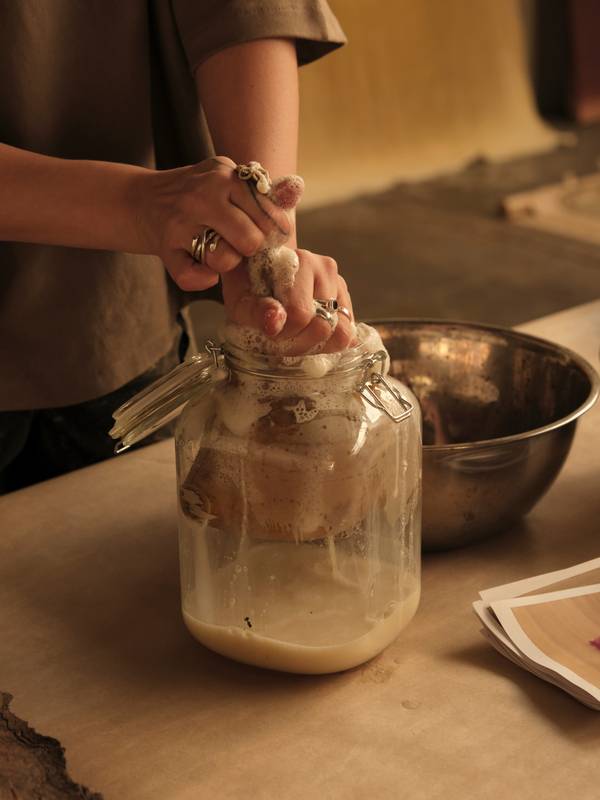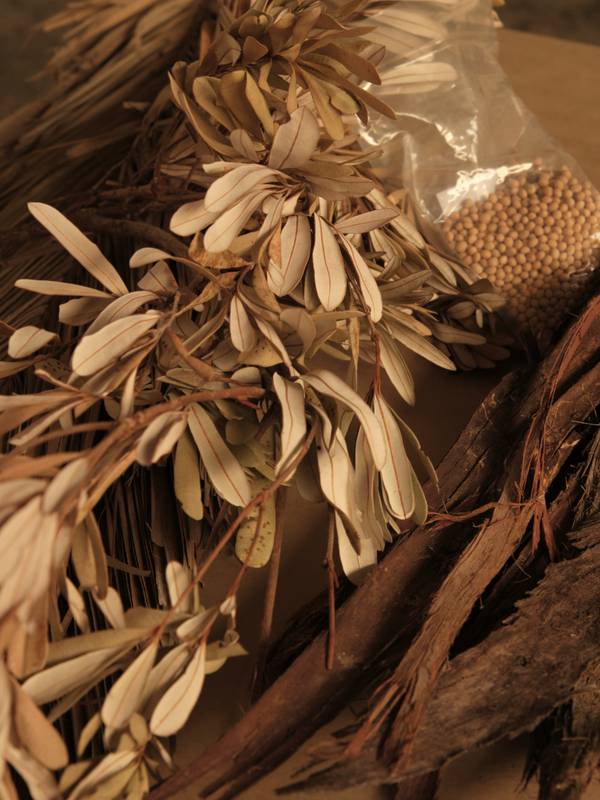Though a career in the art world wasn’t always the most obvious choice for Ksenia Shinkarenko, the call of the canvas was too strong to ignore. Born in Russia, the Melbourne-based artist began her creative journey in Tokyo, where she spent close to a decade working as a fashion designer before relocating to Australia.
In the studio with Ksenia Shinkarenko
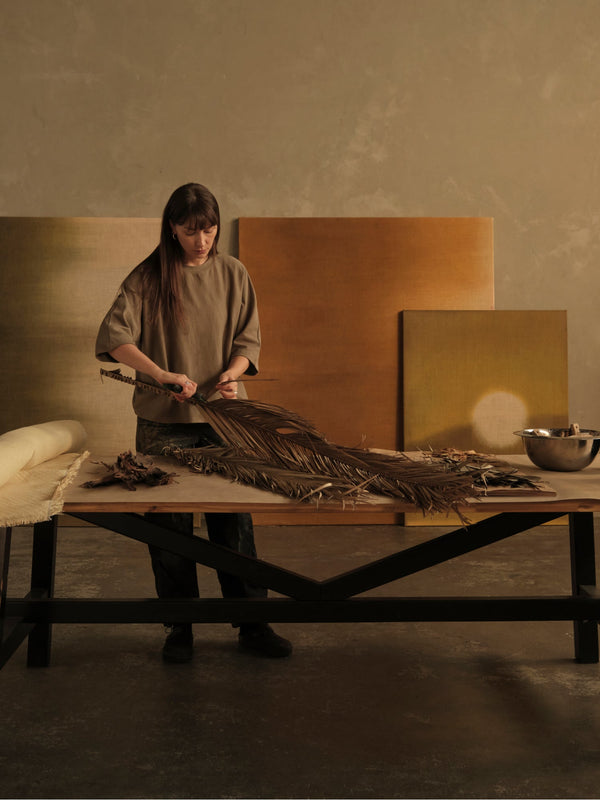
Looking back, the roots of Ksenia’s practice stretch back to early childhood. Encouraged by her mother to lean into her creativity, she remembers long hours spent sketching portraits from art books, visiting museums, and inventing rhymes on walks. “She taught me how to slow down and observe,” Ksenia reflects. That sense of slowness and quiet consideration now informs Ksenia’s work—a body of soft, sculptural pieces made using natural fabrics and plant-based dyes.
Relocating to Melbourne became the turning point in her shift from fashion to fine art. Feeling welcomed by the city’s creative community, she was inspired to pursue her practice more fully. “What I like about Melbourne is that creativity feels supported here,” she says. “People are grounded and open. Many artists have come to it through different paths, and there’s respect for that. There’s also a real appreciation for natural materials, good design, and a slower pace of life.”
From her sunlit studio in St Kilda, Ksenia creates layered, tactile works that reflect both movement and calm. “I use natural fabrics like cotton and hessian, materials that soften light and hold warmth,” she explains. “The colours are built up gradually, in layers, creating an organic motion across the surface. The process is slow, but grounding.”
Each piece generally begins with a sketch, but rarely follows a fixed path. “One image leads to another and I follow what feels right,” she says. “I usually work best in the late afternoon when the light softens,” she explains. “Music helps me connect at the beginning, but once I’m in it, I hardly notice anything. Sometimes I plan materials and sketch few forms to anchor the process but mostly I just respond, refine, and layer until it feels complete.”
Ksenia’s time in Japan also remains an enduring influence, from the quiet presence of its architecture to the reverence for materials. “I’m often drawn to spaces that blend in with its surrounding and landscape. Especially in Japanese design, where everything is treated with care.”
When it comes to how her work is received, Ksenia prefers to leave room for interpretation. “I like to leave space for people to feel what they naturally connect with. Each piece holds its own energy — sometimes calm and melancholic, sometimes more alive. If it brings someone into a moment of stillness, that’s enough. I like that everyone sees something different. That openness is part of it.”
Looking ahead, Ksenia is developing a new body of work, though, as she explains, the form is still taking shape. “The mood is internal and quiet. The colours are subdued, and the light feels hushed,” she says. “I’ve been thinking about how light behaves in silence, how it lands, reflects, or disappears.”
As for the future, her hopes are grounded in growth, exploration, and connection. “I’d love to have a second studio overseas and move between cities. I’d also like to collaborate more. With other artists, or with brands and projects that bring together creativity and wellbeing,” she says. “Mostly, I want to keep growing, to keep learning, experimenting and creating. I want the work to stay alive and offer something meaningful in return.”
Photography by Madeline Burke (@madeleineburke)
